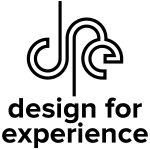Look at a company from the inside and you might see something messy and complex that’s dependent on fragmented technological systems. Seen from the outside, however, companies with successful customer experience (CX) strategies appear cohesive, comprehensible, and unified.
Customers can interact with these companies through a well-coordinated ecosystem of products and touchpoints, and are rewarded at every turn.
“[CX practitioners] focus on the interactions that customers have at every stage of the customer journey: discover, evaluate, buy, access, use, get support, leave, and re-engage,” writes Kerry Bodine in her article “A Deep Dive Into Customer Service,” published earlier this year. “[They] are interested not only in digital touch points, but also in marketing communications, product packaging, checkout counters, receipts, face-to-face conversations with sales reps, and phone calls to customer service.”
Bodine is a VP and principal analyst at Forrester Research and the author of the book Outside In: The Power of Putting Customers at the Center of Your Business. She’s also a speaker at Forrester’s Forum for Customer Experience Professionals West in Los Angeles, which began yesterday and closes today.
As Bodine notes in her article, at Forrester, “we’re not talking about some subset of customer interactions. We’re talking about all of them.” The DfE Complete Customer Experience Ecosystem award recognizes companies that offer a consistent, cohesive customer experience across all of their interactions, maintaining a sense of brand and delivering value and rewarding experiences.
If you know of companies with CX ecosystems that support customers seamlessly across products and touchpoints, nominate them. If you think that your company has created a customer experience paradise, apply for this award right now!
Follow the rest of today’s Forrester’s Forum on Twitter via #FORRForum, and check out upcoming events here.
Image of glowing globe courtesy Shutterstock








